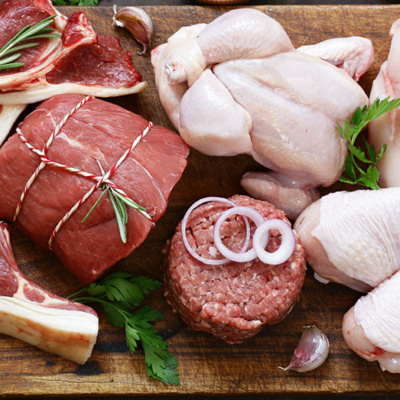top of mind news
- Latin Culinary Options Are Expanding, With More Delicious Choices On The Menu
- Teens’ Spending Drops To Lowest Rate In 8 Years
- How Restaurants are Retaining Good Employees
- What European Tariffs Mean For Restaurant Menus
THE FARM
Poultry
Following sharply higher production schedules noted throughout mid-September, output has moderated, with chicken harvests for the week ending September 28th up 3.3% from the year prior. With bird weights continuing to seasonally increase, the six-week RTC production average is running 5.1% better than a year ago. As production increases, wholesale prices have been mixed, with breast meat and leg quarters easing but wings and tenders remain mostly firm. Despite breast meat prices falling to their lowest since at least 2000, further downside is expected moving forward. Similarly, wing prices should begin to ease from the back half of October into year’s end.
Beef
Beef production continues to ease, with last week’s 523.2 million pounds produced coming in 1% below the week prior and 1.4% less than last year. Slowing production schedules have done little to support beef prices, with the Choice cutout continuing to decline this early fall. Yet, the ribs are the only rising primal of the carcass. There may be another week or two of lower beef prices before the seasonal rebound occurs into November. Beef 50s prices have fallen sharply, but ground beef prices are still elevated. But, only limited downside price action from here is expected before fat trim seasonally rises in December.
Pork
Weekly pork production continues to set new weekly records, with last week’s output coming in 1.3% over the week prior but a whopping 7.1% larger than a year ago. Amid the escalating production schedules, pork exports have been on the rise as well, with shipments throughout August up 22% from last year. Yet, pork prices remain slow to adjust to the rising exports and have been strengthening this early October. Price risk for the various pork items is to the upside, but bellies could experience the biggest volatility during the coming weeks.
THE SEA
Seafood
The salmon markets are near year ago levels despite imports in August falling below 2018. During the month, the U.S. brought in .8% less salmon than the previous year. However, imports of Atlantic salmon filets were higher by 9.4%. History suggests that the salmon markets could soften during the fall. The Atlantic salmon filet average price in December has been below October in three of the last four years.
THE GARDEN
Produce
The lettuce markets are firming. The principal harvest area is beginning to transition to Huron, California, and supplies are limited. U.S. lettuce shipments last week fell 6.1% from prior week and were 7.2% less than the same week last year. The chief lettuce area will shift again next month to the Imperial Valley region which could cause lettuce supplies to remain erratic. The five-year average move for the iceberg lettuce market during the next seven weeks is an increase of 31.2%. The downside price risk in the avocado markets from here is limited.
THE KITCHEN SINK
Dairy
Spot butter prices this week equaled their lowest level since February 2015. August U.S. butter imports were up 11.3% (yoy) and were the second best for any month. Butter exports were down 55% versus the prior year. Butter prices usually fade now through late-December. Cheese prices are up since last week and have shown resilience after seasonally peaking last month. Domestic August cheese exports were 5.9% less than the prior year and the smallest since November. History says cheese prices will decline from here, but this year’s seasonal drop may be muted if milk production gains don’t improve.
Grains
The U.S. corn harvest is underway with 15% in the bin as of Sunday which compares to 27% as the five-year average for the date. The corn crop remains historically immature and at levels only seen a few times in the last three decades. Thus, the 2019-20 corn supplies are still vulnerable, so prices may remain supported.
Oil
Nearby international sugar futures (#11) are lower since last week and are priced near multi-year lows. Conducive weather in Brazil is aiding sugar production there and recent lackluster ethanol output in that country are two bearish factors. That said, long term buying opportunities for sugar are present.














